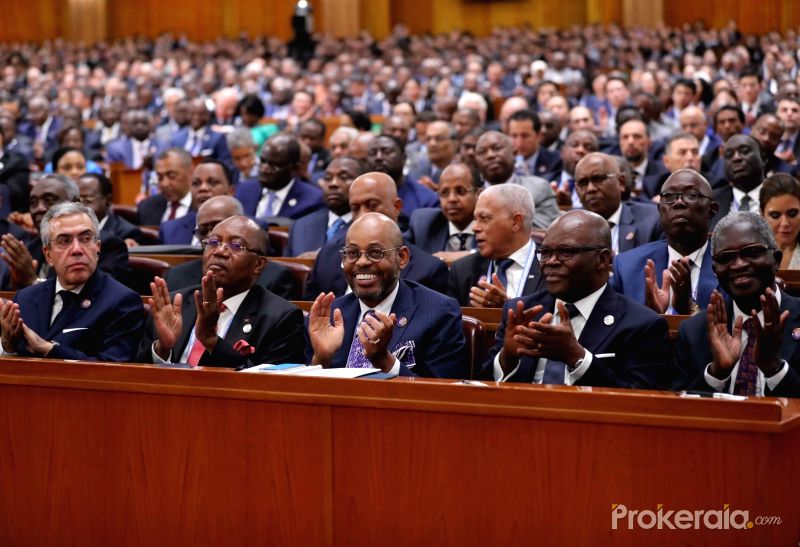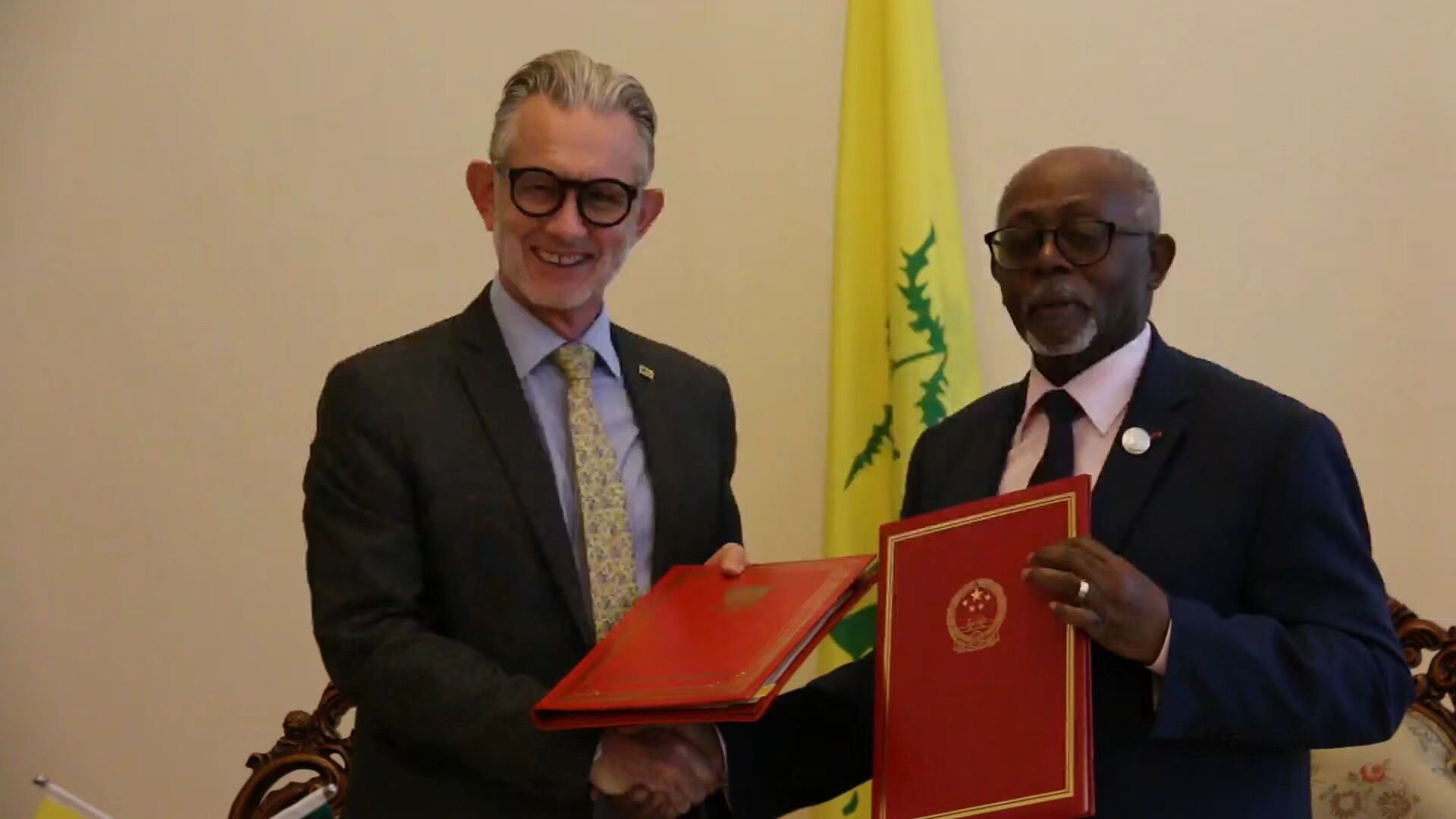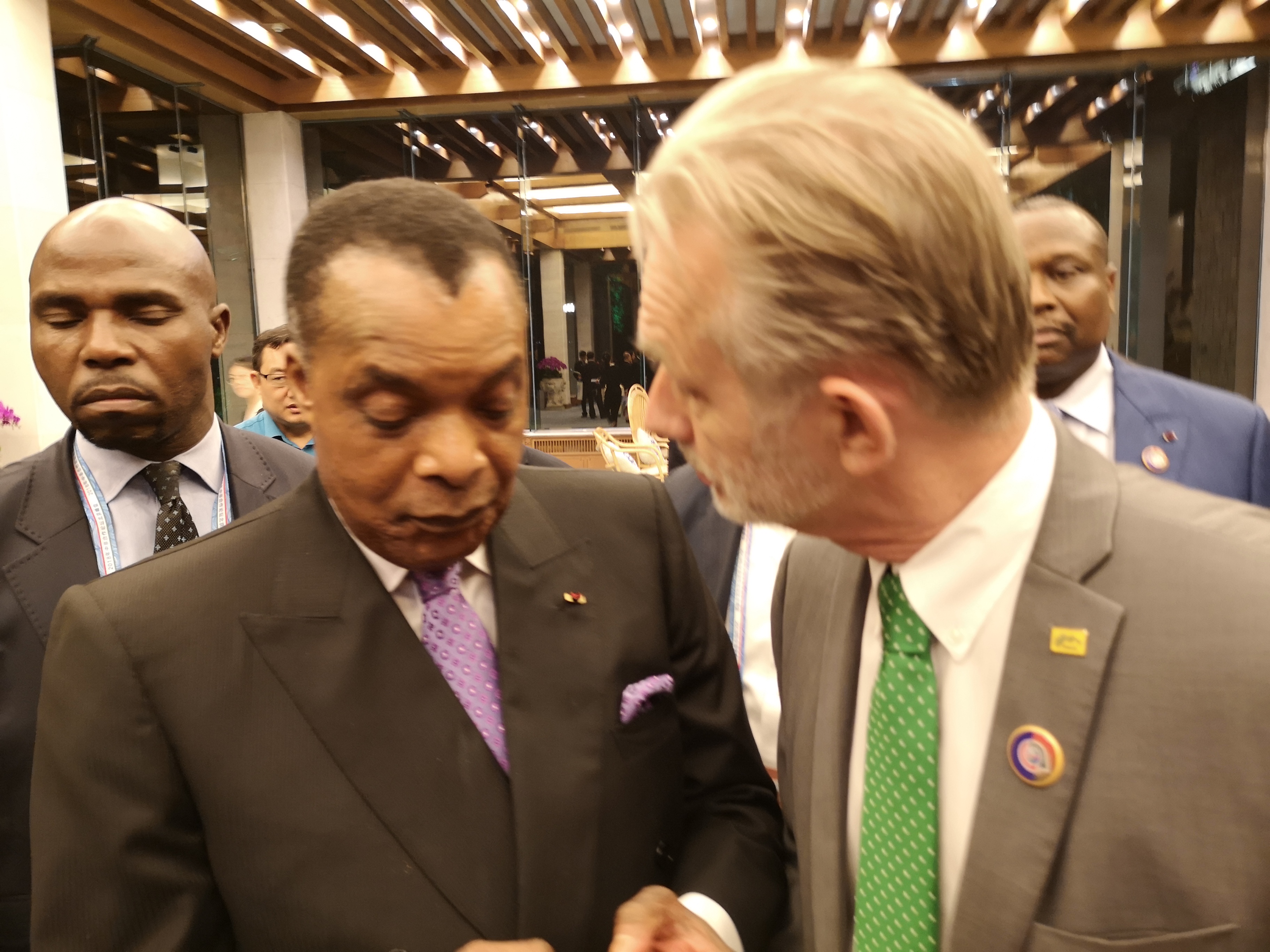This year’s Forum on China-Africa Cooperation (FOCAC) took place in Beijing, China. The event, hosted by President Xi Jinping brought together delegations from Africa and China led by their Heads of State and Ministers for Foreign Affairs, to talk about building a “China-Africa community with a shared future in the new era”. I was privileged to be invited as the Head of the only Inter-Governmental Organisation with its Headquarters in China – the International Bamboo and Rattan Organisation (INBAR). The presence of so many key people in Beijing also provided an opportunity for additional discussions.

INBAR has 19 Members in Africa, and the continent has abundant bamboo and rattan resources. FAO statistics amount to 3.6 million hectares of bamboo, but this excludes figures for most of Central Africa. I therefore estimate the total bamboo cover to be in the order of 6 million hectares, which is similar to the bamboo natural capital in China!
Our members in Africa are considering bamboo and rattan for a variety of purposes, depending on the country and its domestic development priorities. Bamboo is used for household energy throughout the African continent, either as fuelwood or as charcoal. We are particularly keen to promote bamboo charcoal, as research has shown that it has no sparks, little smoke or smell, but it has similar calorific values as traditional wood-based charcoal. Most importantly, charcoal made from bamboo is sustainable, as bamboo re-grows naturally, and it is based on legitimately harvesting “woody grass” poles instead of illegally cutting trees.

But bamboo is also used to produce furniture, construction panels and other materials, and this is an area where China has a lot to offer, as bamboo has been part of Chinese culture for centuries. China has a well-developed bamboo research community, a productive bamboo industry worth 30 Billion US Dollars per annum, and many institutes that can provide training and capacity building. I was therefore very happy to learn during the FOCAC Ministerial discussion on Sunday morning 2 September that bamboo is mentioned in the 2019-2021 FOCAC Plan of Action.
INBAR can play the bridge between China and Africa with respect to bamboo and rattan development, and I was pleased to be able to make that point during a live interview with Ms Hou Na from the China Global Television Network (CGTN).

We are already providing such a link with China in East Africa, where the Netherlands and China have agreed to jointly support the establishment and strengthening of bamboo enterprises in Ethiopia, Kenya and Uganda through a technical assistance project. We will develop new connections in other parts of Africa, as INBAR has signed an agreement with the International Fund for Agricultural Development (IFAD) to support bamboo development in Cameroon, Ethiopia, Ghana and Madagascar, which builds on a current IFAD/EU-funded project. Chinese technical expertise is expected to bolster the project through training and capacity building with additional support from the Chinese Ministry of Commerce. Finally, we are also discussing project ideas in Africa with the new International Development Cooperation Agency of China.

INBAR already has two Regional Offices in Ethiopia and Ghana to facilitate these connections, but we are lacking a presence in Central Africa. A key event for INBAR during FOCAS was the signing of the agreement for the establishment of the INBAR Regional Office for Central Africa with Cameroon Minister for External Relations HE Lejeune Mbella Mbella during his presence at FOCAC. The signing ceremony at the Embassy of the Republic of Cameroon to the Peoples Republic of China during the afternoon of Sunday 2 September 2018 was another milestone for INBAR.

With Cameroon Minister for External Relations HE Lejeune Mbella Mbella
The FOCAC plan of action provides a strong foundation to work with our Members in Africa, and to mobilise Chinese support for technical assistance and investment opportunities in bamboo development. One of the ways in which this will materialise is the establishment of a China-Africa bamboo training centre, with which INBAR will closely cooperate to create targeted capacity building initiatives. I was thrilled that President Xi mentioned the establishment of the China Africa Bamboo Centre during his key-note speech at the opening ceremony of FOCAC on Monday 3 September, as this really put bamboo on the political map.

On Tuesday morning 4 September we were approached with the offer to meet Republic of Congo President HE Sassou Nguesso. INBAR has no Members in the central Congo Basin, and the Republic of Congo has a lot of forest. I believe that it may be beneficial for the country to join INBAR, so I agreed to meet President Sassou Nguesso, and I was able to make that case during a short meeting with the President in the evening. Congo borders Cameroon, and the new office in Yaoundé would be helpful in providing technical assistance and general support. I also mentioned the planned China-Africa Bamboo Centre, and President Sassou Nguesso was keen to have young people from Congo trained in bamboo development techniques.

With President of Republic of Congo HE Sassou Nguesso
Finally, FOCAC was an opportunity for the President of Madagascar, HE Hery Rajaonarimampianina, to spend some time in Beijing, and one of his activities on Wednesday 5 September was to visit INBAR Headquarters and the bamboo showroom in the building next door. I had the privilege of showing President Rajaonarimampianina the many applications made from bamboo, and we talked about the opportunities for landscape management and economic development with bamboo. He was very interested, especially in the household items, flooring, curtains and charcoal made from bamboo.

With the President of Madagascar, HE Hery Rajaonarimampianina
Madagascar has more than 40 species of natural bamboo, so there is real potential for development of small and medium bamboo enterprises.
All-in-all a few busy days, but some good achievements for INBAR and bamboo and rattan in Africa.

0 comments
Write a comment